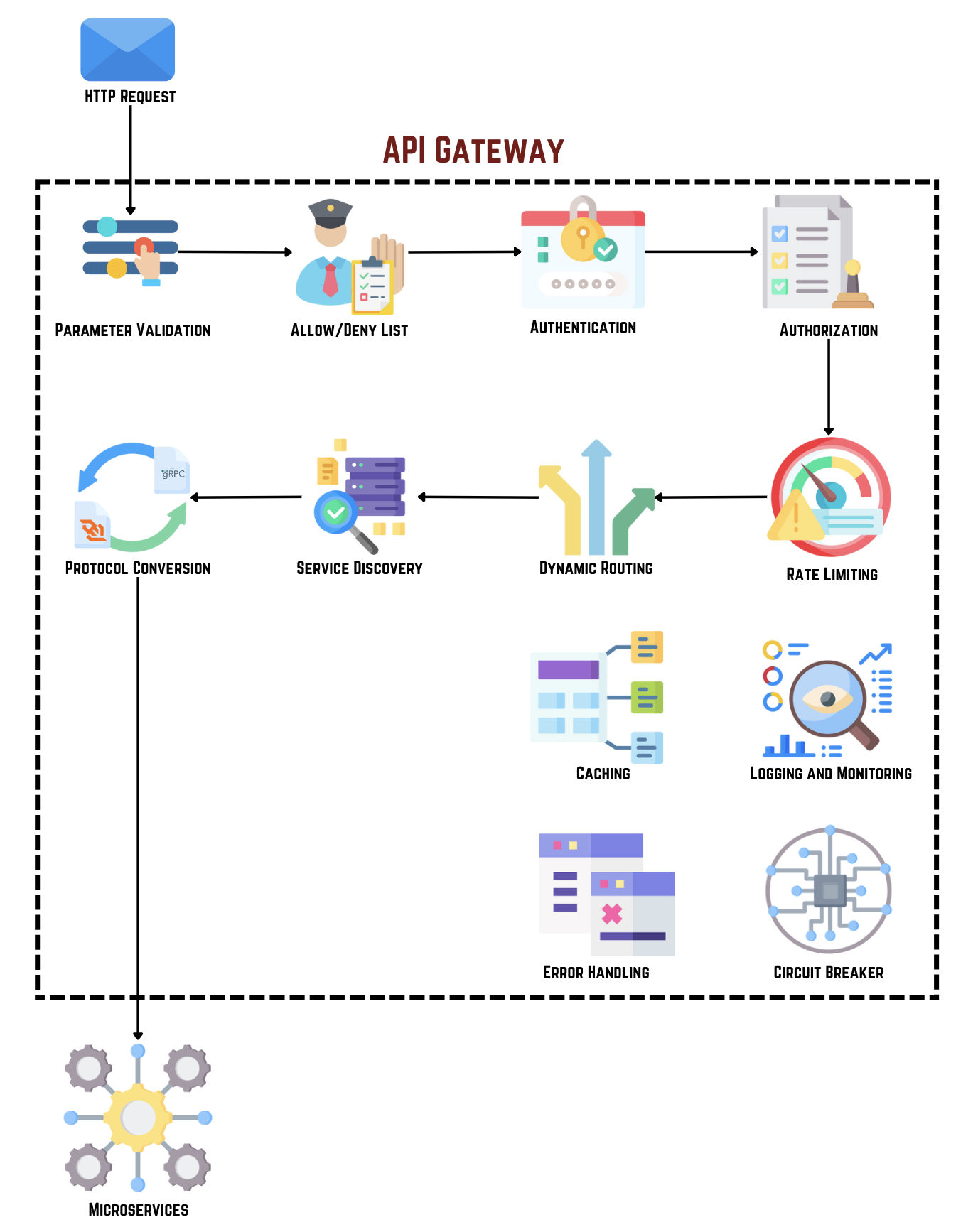API Gateway
An API Gateway acts as a single entry point for all client requests to multiple services. It simplifies access by providing one address for various services. The Gateway ensures requests go to the correct service, which improves communication efficiency.
The Gateway enhances security by handling authentication (checking if users are who they say they are) and authorization (ensuring they have permission to access certain services). It also controls the number of requests clients can make to prevent overload and distributes them evenly to avoid overwhelming any one service.
Monitoring and logging are essential functions of the API Gateway. It tracks all requests and responses, helping to monitor service health and troubleshoot issues.

How Does an API Gateway Work?
- Client Requests: A client (like a mobile app or web browser) sends a request to the API Gateway.
- Routing and Processing: The Gateway checks if the client is allowed to make the request and sends it to the correct service.
- Response Handling: The service processes the request and sends a response back through the Gateway to the client.
The Role of an API Gateway in System Design
An API Gateway is crucial in modern system designs, especially with microservices. It simplifies access to services, handles security, and manages traffic efficiently. The Gateway routes requests, balances loads, and consolidates responses, contributing to a scalable and secure architecture.
Advantages of Using an API Gateway
- Simplified Client Communication: Clients interact with one endpoint.
- Improved Security: Centralized management of authentication and authorization.
- Better Traffic Management: Easier monitoring and control of request traffic.
Challenges of Using an API Gateway
- Single Point of Failure: If the API Gateway goes down, all services become inaccessible. Using multiple Gateways can mitigate this risk.
- Increased Complexity: Adding an API Gateway adds complexity to the system architecture.
An API Gateway streamlines client communication, strengthens security, manages traffic effectively, and provides tools for monitoring and optimization. It is essential for creating robust and manageable system architectures.